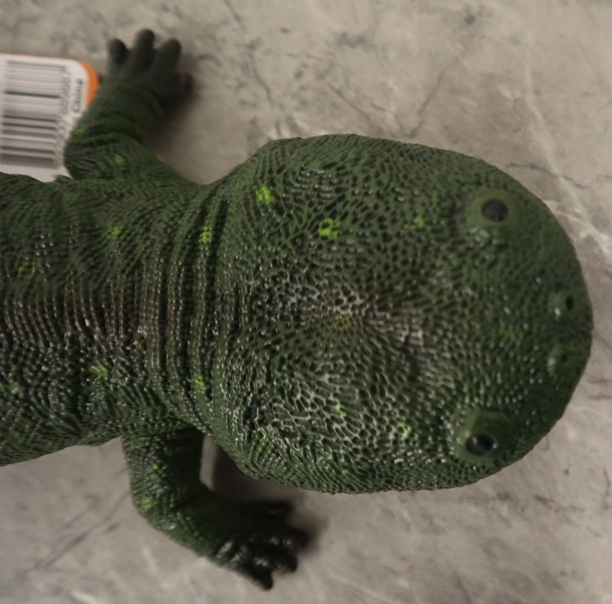Following a public vote, Koolasuchus a giant temnospondyl from the Early Cretaceous has been declared the State fossil of Victoria. The huge amphibian, perhaps the very last of its kind, thrived in the cool conditions of southern Australia. During the Early Cretaceous, Australia was located at a much higher latitude than it is today, it was within the Antarctic Circle. The cool climate prevented crocodilians from inhabiting the region and their absence permitted one of the last of the temnospondyls to occupy the crocodilian niche in the ancient ecosystem.

A life reconstruction of Koolasuchus cleelandi, the State fossil of Victoria. Picture credit: Peter Trusler.
Picture credit: Peter Trusler
Koolasuchus cleelandi
Acknowledging the result of the public vote which took place last August (August 2021), Lynley Crosswell, CEO and Director, Museums Victoria commented:
“Victorian state emblems recognise and celebrate the natural history of our region. Museums Victoria is renowned for our palaeontology collection with exceptional fossils from internationally significant fossil sites across Victoria. We are the custodian of these fossils, we display them, research them and keep them safe for future generations to learn from. Koolasuchus cleelandi is of global significance and it provides clues to the evolution of life on Earth and the past environments of Victoria.”
Koolasuchus was named and described in 1997, from fragmentary fossil material including elements from the huge lower jaw that had been found south of Melbourne. The species name honours Australian geologist Mike Cleeland for his work for helping to plot and map the geology of Australia.
This huge amphibian, that probably favoured fast flowing streams and rivers, came to greater prominence when it featured in episode five of the ground-breaking BBC documentary series “Walking with Dinosaurs”. The episode, entitled “Spirits of the Silent Forest” looked at the remarkable biota associated with southern Australia in the Early Cretaceous.
Update: A Koolasuchus Model
CollectA have added a Koolasuchus cleelandi model to their Deluxe range (2023). This is a beautiful model of a temnospondyl. Moreover, it recognises the unique fossil record of Victoria. The 1:20 scale figure is the first prehistoric amphibian model to be made by CollectA. It measures around twenty-one centimetres in length.
To view the range of CollectA Deluxe prehistoric animal figures: CollectA Deluxe Prehistoric Life Models.

A close-up view of the head of the CollectA 1:20 scale Koolasuchus figure showing the detailed pattern on the head. This patterning on the skull is a characteristic of temnospondyls. Picture credit: Everything Dinosaur.
Picture credit: Everything Dinosaur
Visit the award-winning Everything Dinosaur website: Prehistoric Animal Models and Toys.






Leave A Comment